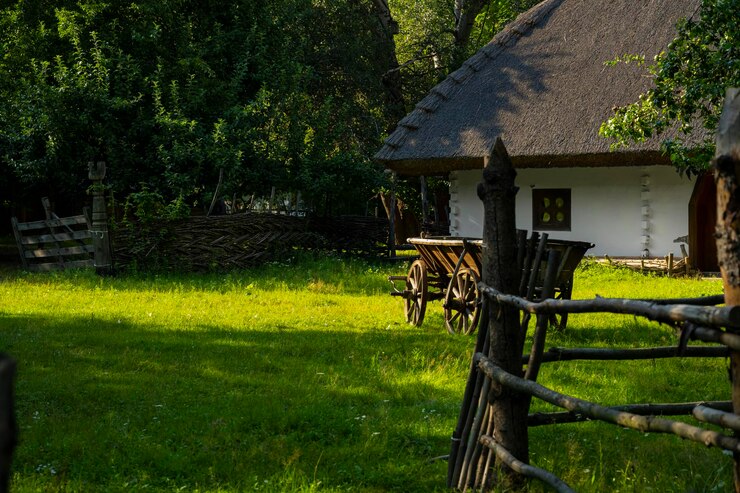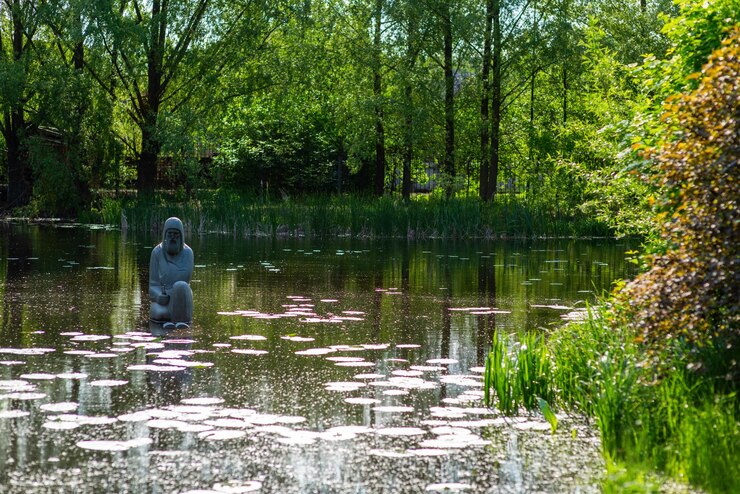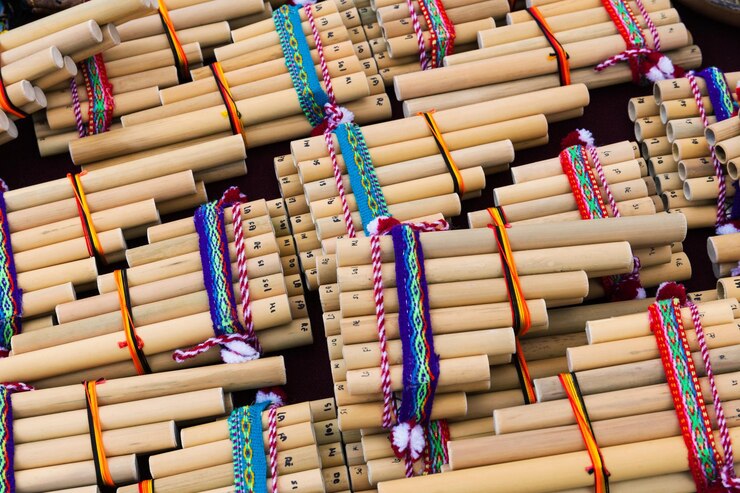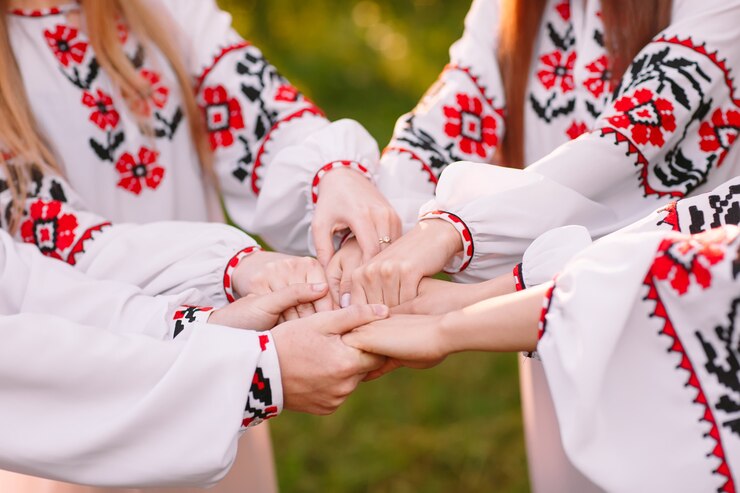Slavic mythology: what did Ukrainian forefathers believe in?
02 November 2022
Slavic mythology is a vast and really fascinating topic, the study of which continues to this day. It’s not just the big pantheon of gods, calendar characters, and spirits! Modern historians, linguists, and ethnologists have to re-examine some milestones of the era of Kyivan Rus. This is related to the activities of a huge number of historians, publicists, and writers of the Russian Empire in the 18th-19th century, and in their works, they quite freely interpreted the chronicles, often embellishing stories and even creating new ones.
So, from inaccurate translations, erroneous lists, and literary fantasies, the gods of Uslad, Zimcerla, Lel’, Yarylo, and some other characters were born. The real pre-Christian mythology of Kyivan Rus did not have time to become as developed as, for example, the Greek one. Despite this, impressive myths and legends have survived to this day!
Perun — the lord of lightning
The worship of nature and the cult of ancestors are the basis of Slavic mythology. Despite its diversity, the authentic pantheon is subject to one creator of Earth and Sky. Some researchers believe that it was a separate deity, but most assign a key role to Perun, the lord of lightning, thunder, fire, and rain. It is he who acts as one of the main defenders against evil spirits and other dangers.
According to legend, Belobog carved Perun out of stone and revived him. The master of lightning was depicted as a tall, stately man with silver hair and a golden mustache. He had a heavy hammer in his hands and a bow and fiery arrows behind his back. It was believed that thunderstorms were battles between Perun and evil spirits (Divas), which were sent by Chernobog or Mara. These spirits sought to lock up the water in the clouds so that hunger and poverty reigned on earth. However, Perun, thanks to his incredible strength, as well as divine weapons, split the frozen clouds and exterminated his opponents.
The myths of the ancient Slavs say that the lord of lightning favored people, but sometimes he could accidentally kill some of them. The evil Divas are to blame for everything: fleeing from Perun, they were able to move into people who did not have time to hide from a thunderstorm. However, the deceased received a reward — his or her soul moved to Vyriy (the other world where the gods lived), and the person himself was henceforth considered the brother of the thunderer. The Slavs believed that Perun’s special care was given to people whose lives were connected with the number «9». For example, travelers voyaging for 9 days/weeks/years or families with 9 children.
The fourth day of the week was considered the day of Perun when special honors were paid to the god. Wells, old oaks, and entire oak groves were also dedicated to the Lord of Lightning. When Prince Vladimir baptized Kyivan Rus and ordered the destruction of the largest pagan temple in the capital, the sacred «tree of Perun» was cut down and thrown into the Dnipro river. According to legend, the idolaters chased after the idol as it was carried away by the current, exclaiming, “Vydubai (swim out), Bozhe (God)!”.
It is believed that they managed to pull the shrine ashore not far from the Zvirynets tract, and later, opponents of Christianization began to gather there. To prevent this, the Vydubytskyi Monastery was erected in those parts. According to chronicles, the Slavs on the territory of modern Ukraine and Belarus worshiped Perun for a long time after the arrival of Christianity.
Belobog and Chernobog — eternal opponents
Without Belobog and Chernobog, the embodiments of universal Good and Evil, Old Slavic mythology would be incomplete. There is a beautiful legend about the beginning of their confrontation. Once on Earth, there was only the sea. Belobog decided to change this, therefore he sent his shadow, Chernobog, to create land. He turned out to be powerful, but proud and selfish. Chernobog, who did not want to share power over land, tried to kill Belobog. However, his opponent survived and even blessed the Earth. Belobog discovered that the creation of the ground does not stop, and more and more land appears from the sea, which threatens a shortage of water for all living creatures.
After an unsuccessful attempt to negotiate, the patron of Good created a bee and sent it to follow Chernobog. Finally, a small insect found out the secret: it was necessary to draw a cross on the land and say «Enough». Chernobog was so angry at the interference in his affairs that he cursed the enemy, and from that time he had to eat bee secretions. However, Belobog found a way out by making the product sweet and healthy. This is how honey was born.
Although the legends of Belobog and Chernobog tell of their constant struggle, these two characters were considered equal in importance: they helped each other to do great things, maintaining the balance of good and evil throughout the Earth. In the latter, Perun helped them, dividing the warring gods and keeping the Mezha (line) between them.
This is evidenced by a legend first recorded by A.N Afanasiev. Once there lived a skilled blacksmith who placed two idols («chura») near his workshop, in honor of Belobog and Chernobog. Before starting work, he bowed to both, and periodically brought gifts to them. The master’s son, who inherited the forge, turned out to be less wise: he bowed to Belobog and spat in the direction of Chernobog because he was the embodiment of Evil.
Once, the hero of our story had a student. The apprentice very quickly caught up in skill with the master. Once, a noblewoman, surrounded by servants, drove up to the forge because it was necessary for her to shoe a horse. At the same time, the apprentice offered to reforge her from an old woman to a young lady, and she agreed. The blacksmith’s apprentice melted the forge, seized the old woman with tongs, and sent her into the fire. After that, he dipped the woman into milk, hit her with a hammer, and a young girl appeared from under the coal crust. Shocked by the reincarnation, the lady paid the blacksmith and rushed out of the yard. After her departure, the apprentice also disappeared.
After some time, the satisfied lady returned to the forge with her old husband because she wanted to reforge him too. Although the blacksmith did not know the apprentice’s secret, pride prevented him from admitting that the apprentice had surpassed the master. He did everything in exactly the same way, but after being hit with a hammer, the old man crumbled into coals. For this, the lady sent the blacksmith to the princely court, where he was sentenced to death. Then Chernobog himself appeared in front of the master on a fire-breathing horse in the form of an apprentice, and then the main question sounded: «Well, blacksmith, won’t you spit on an idol of me anymore?».
According to one version, Chernobog then dragged the blacksmith to the afterlife, and according to another, he forgave the master and even revived the old man he had killed, giving him youth. In this way, the mythology of the Slavs emphasizes the importance of even seemingly negative heroes.
Veles (Volos) — the god of cattle breeders and musicians
According to many historians, the cult of Veles originated in the Stone Age. Primitive hunters put on the skins of animals, which more often than others became their prey, and worshiped a deity in the guise of a bear. In the Bronze Age, after the transition to cattle breeding, Veles began to be associated with domestic animals. According to ancient legends, it was this god who helped the Slavs domesticate animals, taught them to graze them, not kill them, use them as draft power, and grow them for milk, meat, and skins. With the development of cattle breeding, Veles turned into the second most important (after Perun) patron of people. His name is mentioned even in the oath of the Rusyns to the Greeks, dated 945.
According to popular beliefs, volkhvy (wizards) who knew how to cure and take care of animals, as well as artisans, were gifted with special attention from Veles. Also, the mythology of Rus ascribes to this deity a love of music. In his spare time, Veles is said to have enjoyed playing the flute. The instrument was created especially for him by the sons of Stribog (the god of the wind).
The Tale of Igor’s Campaign says that the great singer of Kyivan Rus Boyan was the grandson of Veles. Legends also claim that this god was the father of all giants (velets, volots). No wonder the word «velyi» meant great or large. That is why it was believed that Veles patronized people who were naturally endowed with high growth and physical strength.
The god himself was portrayed as a powerful young man dressed in animal skins. His clothes were intercepted by a wide belt «cheres», on which hung a leather purse «kalita». Spiritual riches were stored in the «cheres», and worldly riches were kept in the «kalita».
It is interesting that the place of the modern Halloween among the ancient Slavs was occupied by Veles night. According to belief, during the period at the turn of the seasons, power passed from Belobog to Chernobog. That night, the worlds of the living and the dead met, and the line between them became very thin. The holidays surrounding Veles night were dedicated to harvesting and preparing meat for the winter. This is partly why the celebration was named after the patron of cattle breeding. Another reason is the belief that only Veles is able to know the secrets of two different worlds, the secrets of Belobog and Chernobog.
It is known that the ancient pagan temple in Kyiv was located on Podil, where the old Voloska street still lies even today.
Lada — patroness of marriage
Slavic Lada was considered the wife of Perun, the patroness of marriage and hearth and home. In addition, she was the eternally young goddess of beauty, spring, fertility, and fun. It was on behalf of Lada’s name that the words «ladyty» (live together in peace without arguments) and «ladnyi» (beautiful, healthy, stately) were created. Holidays dedicated to the goddess were celebrated in the spring when the snow began to melt and people were actively preparing for the start of fieldwork. The territory inhabited by the Slavs was vast, covering the lands of modern Ukraine, Poland, the Baltic countries, and partly Russia. Lada was known and revered in all corners of Rus. There are several legends dedicated to the goddess.
According to one of them, once Lada lay down to rest in the Tauride steppes, tired on the way to the rest of the Slavic lands. She carried spring, and therefore the long-awaited warming in other territories did not come. The evil Mara took advantage of the dream of the goddess, densely sowing the fields around her with thorny plants that entwined Lada. The goddess of spring slept for a long time and woke up only because of the desperate prayers of the farmers. Lada started to run, but weeds pricked and scratched her body, and where drops of blood fell, viburnum bushes grew.
Myths and legends of the Slavs often tell us about the relationship between different gods. Although Lada was the wife of Perun, according to legend, her fate was closely intertwined with the fate of Veles. The patron of cattle breeders and artisans could not resist the beauty of the goddess of spring, so he seized the moment to kidnap her. Perun raged, but could not defeat Veles, on whose side were herds of clouds and winds, subordinated to a magic flute. However, yearning for her husband, Lada destroyed the magic musical instrument by deceit and reunited with Perun. The latter severely punished Veles: he cut him and scattered him on the Earth. Lada was saddened by such an act, so her husband soon resurrected the kidnapper. But, as a warning, he turned him into a bear. Since then, Veles spends the summer in the forest in the form of an animal, helping people, and in the winter, in his real form, he returns to Vyriy.





